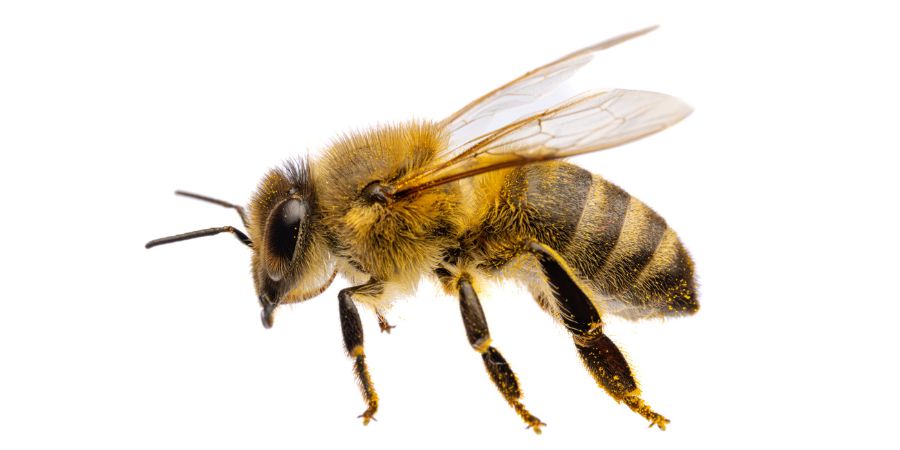
Honeybees can vary in colour, from honey coloured Italian bees to very dark native black honeybees.
Honeybees have large hairy eyes, a furry chest and distinctive bent antennae.
Honeybees are great pollinators for flowers, fruits and vegetables. They get their name from the honey they produce. One hive can produce over 27 kilograms of honey in a good season.
Are honeybees dangerous?
Honeybees are typically docile, they can sting you but only once.
Honeybee stings can hurt but they aren't usually dangerous unless you're allergic to the venom they produce.
If you're allergic to bee stings and do get stung, you can call 111 or get help from 111 online.
Honeybee swarms
Between the months of May and July honeybees are known to gather in swarms. Swarms often happen on a fine day after poor weather when temperatures get higher.
Swarming is a natural process and is the colony reproducing by the old queen leaving with some of the bees. They leave their hive and find somewhere to hang in a cluster until the scout bees decide on their new home.
Honey bee swarms can be extremely dramatic involving many thousands of bees in a large noisy cloud. However, they normally land and settle into a cluster within 15 minutes.
What should I do if I see a swarm of honeybees?
Most honeybee swarms are not aggressive but please:
- Keep yourself, children and pets away and leave them alone.
- Don't use chemicals or other products on them.
Get help to remove a swarm of honeybees
If you see a swarm of honeybees that have settled into a cluster, you can get help from a local swarm collector.
Swarm collectors are usually volunteer beekeepers who:
- Collect swarms on a voluntary basis. They aren't paid for this service but they may ask for some expenses.
- Might not be able to collect any swarms immediately, they may have other jobs or commitments.
- Have to consider their own safety. It might not be possible to remove a swarm from hard to reach places.

